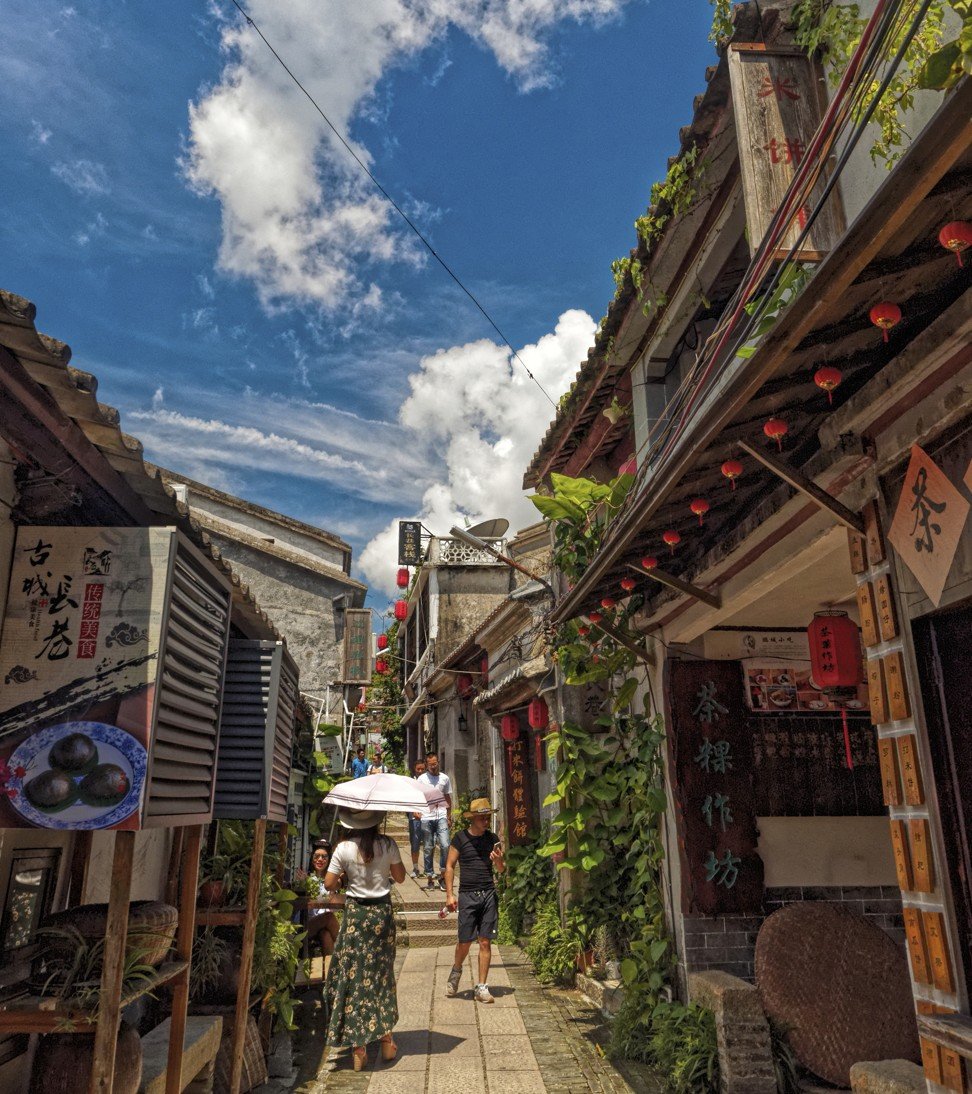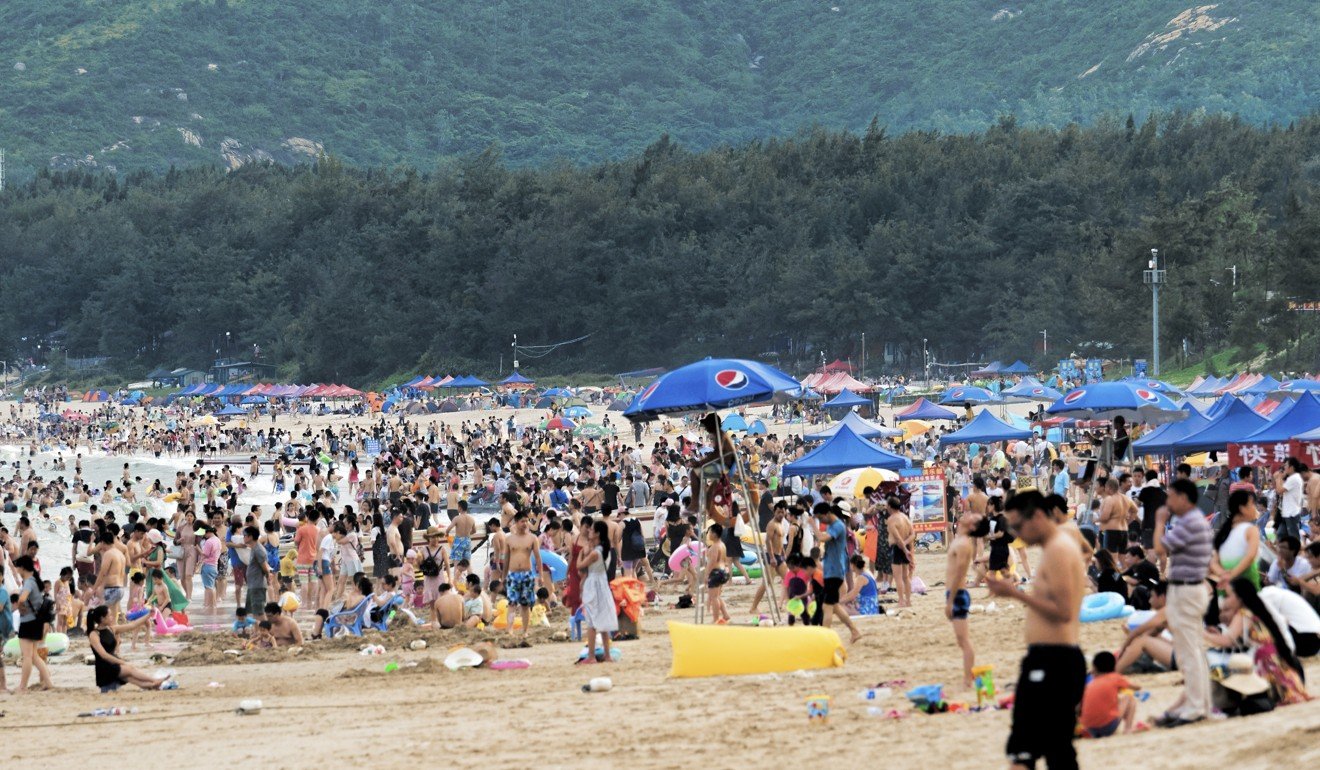
The perfect Hong Kong weekend break: tranquil Dapeng, Shenzhen - history, hikes, and some of China’s most beautiful beaches
To the east of the border city’s concrete jungle and within easy reach of Hong Kong, Dapeng Ancient City is a laid-back walled village nestled in a wooded peninsula with nearby a geopark, hiking trails, and superb beaches
With all the brashness of a new city, and gleaming skyscrapers running along Hong Kong’s northern fringe, Shenzhen might seem an unlikely place for a weekend trip to admire historic Chinese architecture, and head to a beach beneath wooded hills.
Yet go east, and you can explore the Dapeng Peninsula, which lies within the Special Economic Zone but is a place apart, clearly rooted in rural Guangdong province.
The main town, Dapeng, is separated by low hills from Shenzhen’s urban sprawl, and occupies a basin on the peninsula’s east coast. It’s named after a giant mythical bird, the peng, which also lends itself to another name for Shenzhen – Pengcheng, meaning Peng City. There’s a laid-back atmosphere here, with locals on scooters cruising along tree-lined avenues.
Along a highway just east of the town, a sign indicates “Nuclear Power Bridge”. Beyond lies the Daya Bay Nuclear Power Plant, which was highly controversial when it was built in the 1980s – with a million Hongkongers signing a petition against its construction, and a discovery of too few reinforcing bars around a reactor, leading to an atomic industry report titled “Hong Kong fears Chinese Chernobyl”.

A thin strip of beach lines the nearby coast, with small hotels, suggesting attempts to develop a resort here. In itself, the beach is unlikely to tempt too many visitors to the area, but Dapeng does have a main attraction: Dapeng Ancient City.
Although the “city” in its English name is too grand a description for this place, which is more of a walled village, its considerably larger and far more rewarding to visit than any of Hong Kong’s walled villages.
It originated as a fort, built in 1394 to help protect “1,000 households” from pirates. Hong Kong historian James Hayes reported that in 1571, it resisted a siege by Japanese pirates for more than 40 days; and early the next century, as the Ming dynasty collapsed, “Tai Pang [Dapeng] was held for nine years against all comers by a band of soldiers”. On 4 September 1839, Chinese troops from here fought five British naval vessels off Kowloon, in the first armed conflict of the opium wars.

As the morning wears on, visitors begin arriving through the archway of the south gate, where the wall resembles castle ramparts, with a low building on top, in a similar style to gates elsewhere in China, including along the Great Wall.

But while there are businesses, there’s no feeling of this being a rapaciously commercial destination – it’s very different from Hong Kong’s Ngong Ping Village, or even the Old Town of Lijiang in Yunnan province, which is listed as a Unesco World Heritage Site, and has fast food joints and brash disco pubs.
Buildings in the ancient city include temples, and a couple of mansions that were built for generals and now serve as museums.
While visitors enjoy eating, drinking and – inevitably nowadays – taking a host of selfies, they seem easy-going, happy to enjoy culture instead of being frenetic ultra shoppers.
South of town are the hills of the Dapeng Peninsula. There’s a national geopark here, with a rugged landscape similar to areas of the Hong Kong Geopark, which lies to the west, on the opposite shore of Mirs Bay. The scenery is highly rated, and hiking trails include a route to the top of Shenzhen’s second-highest peak, Qiniang Shan, at 869.7 metres.
But on a boiling hot summer day, it seems like a better option to head to one of the beaches, ranked among the country’s most beautiful by Chinese National Geography magazine.
A road surrounded by wooded hillsides leads to one of the best and largest of these beaches, at Xichong, on the peninsula’s south coast.

So far, at least, there hasn’t been unfettered development here, and Hesou is surrounded by greenery. The beach is about 10 minutes’ walk away, and almost 2.5km long.

As sunset approaches, lifeguards blow whistles and wave at bathers – it’s time to get out of the water.

Getting there
Although it’s possible to travel to Dapeng by bus or taxi from Lowu, just over the border from Hong Kong in downtown Shenzhen, the journey is relatively long – an hour or more by taxi. It’s far better to travel via the Sha Tau Kok border zone in the northeast, which can be reached by taking a shuttle bus from Kowloon Tong (various bus companies and prices, departing from near the MTR station exit E), then walking through the Chinese immigration checkpoint, and taking a taxi.
Oddly, there are no regular taxis in Dapeng, but a hotel concierge can help you book a car to Xichong. Bus M232 shuttles between Dapeng and Xichong, passing through Nanao, which affords views of a part of Hong Kong – Tung Ping Chau – not too far offshore.
If you have time for a meandering return journey, you can take a bus from Dapeng to Kuiyong, then a bus to Dameisha – which mostly follows an old coastal road, in parts recalling a bus ride near Stanley.
Dameisha is a beachside town, with a new mall area and more to explore, and worth looking for online if you want to see what a really packed beach can be like. It’s also within easy reach of Sha Tau Kok (Shatoujiao, in Putonghua).
Websites including booking.com and ctrip.com have a variety of accommodation available; the former lists the popular Xichong place that’s converted from traditional housing as “Hesou Hostel”.

